The Rocky Mountain News shut down a decade ago. A look back at the death of an American publishing powerhouse.

10 YEARS GONE
The Rocky Mountain News closed a decade ago this week. A look back at the death of an American publishing powerhouse and the city it left behind.
By Tom Jones
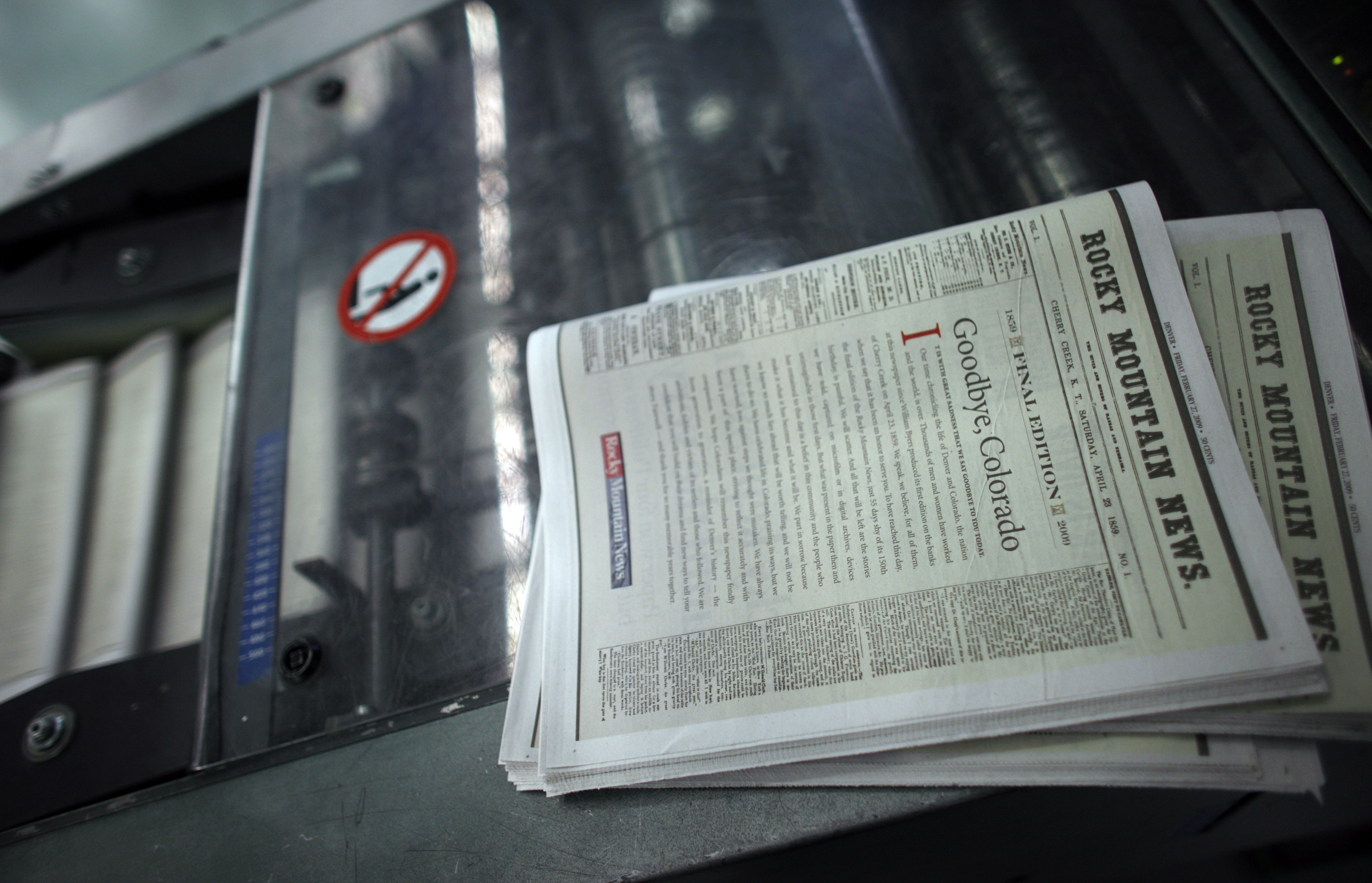
10 YEARS GONE

The Rocky Mountain News closed a decade ago this week. A look back at the death of an American publishing powerhouse and the city it left behind.
By Tom Jones
Early in 2008, John Temple was excited about the 150th anniversary of his newspaper. The publisher, president and editor of the Rocky Mountain News wanted to produce a special section to commemorate the event in April of 2009.
Early in 2008, John Temple was excited about the 150th anniversary of his newspaper. The publisher, president and editor of the Rocky Mountain News wanted to produce a special section to commemorate the event in April of 2009.
But 2008 was a maelstrom for newspapers, and a tipping point in American media. The precipitous loss of print advertising dollars, the challenges of digital media, and the country’s biggest economic crisis since the Great Depression proved disastrous for the industry. By year’s end, the Rocky Mountain News, one of the nation’s most storied and respected newspapers, was in a financial free fall.
It would never make its 150th birthday.
Ten years ago — on Feb. 27, 2009 — one of America’s great newspapers died.
“Who would have ever thought the Rocky Mountain News would go away?” Temple said. “Ten years now. Hard to believe.”
The shuttering of the Rocky Mountain News stunned the industry, sending shockwaves to newspapers across the country. Its closing felt like the end of the golden age, when robust readership and advertising could support two daily papers in the same city.
In the decade since, newspapers have continued to struggle. According to Pew Research Center, the 2009 daily circulation of U.S. newspapers was 45.6 million. In 2017, it was estimated at just under 31 million. From 2007 to 2017, newspaper advertising revenue tumbled from $45.3 billion to $16.4 billion. Staffs have been cut, resources have been slashed and buyouts remain routine.
Journalism has suffered.
Nowhere exemplifies that more than Denver, which went from two large papers fighting to inform the citizenry of Colorado to one product barely staffed enough to cover the city, let alone the state. The paper left standing, The Denver Post, is owned by venture capitalists — some called them “vulture capitalists” — who many say place profits ahead of journalism. Even the Post staff, recognizing its diminished product, has revolted against its owners and begged for them to sell.
“It’s kind of depressing what’s happened in the last 10 years in journalism,” Temple said. “Denver has been an example of that.”
One of the nation’s best
The Rocky Mountain News was a newspaper before Colorado was a state. The first edition was April 23, 1859 — two years before Abe Lincoln became president and 17 years before Colorado was admitted to the union. It was known for standing up against crime and corruption, taking on, for example, notorious crime boss Soapy Smith, who earned his nickname in the 1880s for a street-corner scam involving soap.
In 1926, the paper was bought by E.W. Scripps, the company that would own the paper for the rest its lifetime. The paper nearly folded in the 1940s, but editor Jack Foster convinced Scripps in 1942 to change the paper from a broadsheet to a tabloid. That decision saved the Rocky Mountain News and differentiated it physically from the Post, establishing the two sides in the battle for readership in the Mile High City.
For a half century, Denver was one of America’s great newspaper cities and home to one of the great newspaper wars, especially after Dean Singleton’s MediaNews Group bought the Post in 1987.
When Singleton took over, the Post had a daily circulation just over 227,000, about 100,000 less than the Rocky. It took a decade of steady climbing, but in 1997, the Post was up to 334,486 and passed the Rocky (316,910) for the first time since 1980.
The Post had the name Denver in it, but the Rocky Mountain News was Denver’s paper. The Post covered the whole state. The Rocky Mountain News covered some regional issues from Colorado Springs to Greeley, but mainly focused on Denver. Its tabloid style, design and approach made it feel more like a magazine. It was a regular winner of newspaper design awards.
“People would call it ‘My Rocky,’” Temple said.
The Rocky was especially known for its visuals and photography. It won the Pulitzer Prize for breaking news photography twice: once in 2000 for its powerful images taken after the student shootings at Columbine High School and again in 2003 for covering the Colorado forest fires. (The Post won a breaking news Pulitzer for its Columbine coverage, and has won nine total, four of which came after the Rocky shuttered.)

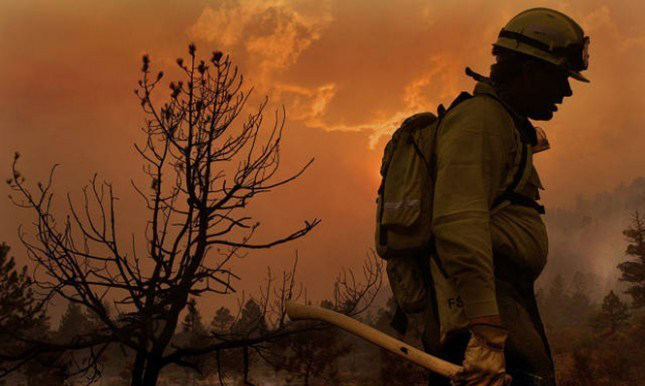
All the while, the Rocky and the Post waged a fierce battle, lowering prices in the fight for subscribers. By the 1990s, readers could subscribe to either paper for a penny a day. Both papers beefed up their staffs. The Rocky Mountain News reached a Rocky-record 275 journalists, while the Post was at 225 and growing.
“I can’t think of a greater newspaper war in my lifetime than The Denver Post and Rocky Mountain News,” Singleton once told the Post.
The papers not only fought for readers with cheap prices, but with their coverage. When one paper started sending three writers to cover Denver Broncos’ road games, the other started sending four. If one planned on sending four to cover the Super Bowl, the other arranged to have five.
“I thought the competition was great for us, but it was also great for the city,” said Greg Moore, who was the editor of The Denver Post from 2002 to 2016. “We brought the best out of each other.”
But the rivalry started taking its toll, especially the penny-a-day subscriptions. Singleton claimed the Rocky lost $25 million in 1999. He also claimed that the Post never lost money, but said its profits dramatically declined.
Those frightening figures led the papers to enter into a joint operating agreement, or JOA, in 2000, as part of what was called the Newspaper Preservation Act of 1970. That allowed competing newspapers within the same market to form partnerships, letting them skirt certain provisions of anti-trust law, theoretically to strengthen them financially. Poynter’s Rick Edmonds wrote in the weeks before the Rocky closed that Denver’s JOA was “expected to stop ad rate wars and pumped-up discount circulation, both expensive and wasteful practices.” But the Newspaper Preservation Act — which mandated that one of the two papers in the agreement would have to be labeled as the “failing” newspaper — ultimately could not preserve the Rocky.
Here’s how the Denver JOA worked: Scripps paid Singleton’s MediaNews $60 million to become an equal partner in the JOA, with the Rocky as listed as “failing.” Both papers moved into a brand-new 11-story building in downtown Denver and the printing presses were upgraded and shared. Both papers continued competing against each other for stories, but the papers each printed just six days a week. Both printed Monday through Friday, but only the Rocky printed on Saturday. The Post got the valuable Sunday edition.
But the JOA couldn’t save both papers. In 2002, when the penny-a-day subscriptions ended, daily circulation plummeted from more than 420,000 for each paper to just over 305,000 for each. And the slide continued each year.
The end of an era
2008 was pivotal in Denver, which wasn’t immune to the recession. Its papers felt the impact, like the rest of the newspaper industry, to declines in print ad revenue and the explosion of digital media.
That summer, the city hosted the Democratic National Convention. History was made there when Barack Obama became the first African-American to win the presidential nomination of a major party.
With politics a touchstone topic, Temple had an idea in early 2008 that seemed shrewd — but its outcome pointed toward the deep financial woes facing the industry.
He proposed a website called RedBlueAmerica.com, which offered thoughtful and intelligent commentary for both liberals and conservatives.
Scripps gave him the go-ahead and put what Temple called “real money” into it. He hired a staff of seven to run the site. But in May, after only a couple of months, Scripps shut it down.
By this point, Scripps was thinking about getting out of newspapers and concentrating on television. Rich Boehne, a former newspaper reporter himself and Scripps’ new CEO in 2008, saw that the revenue declines were not sustainable.
“I think the line I told the board was: ‘The floorboards are weak,’” Boehne said.
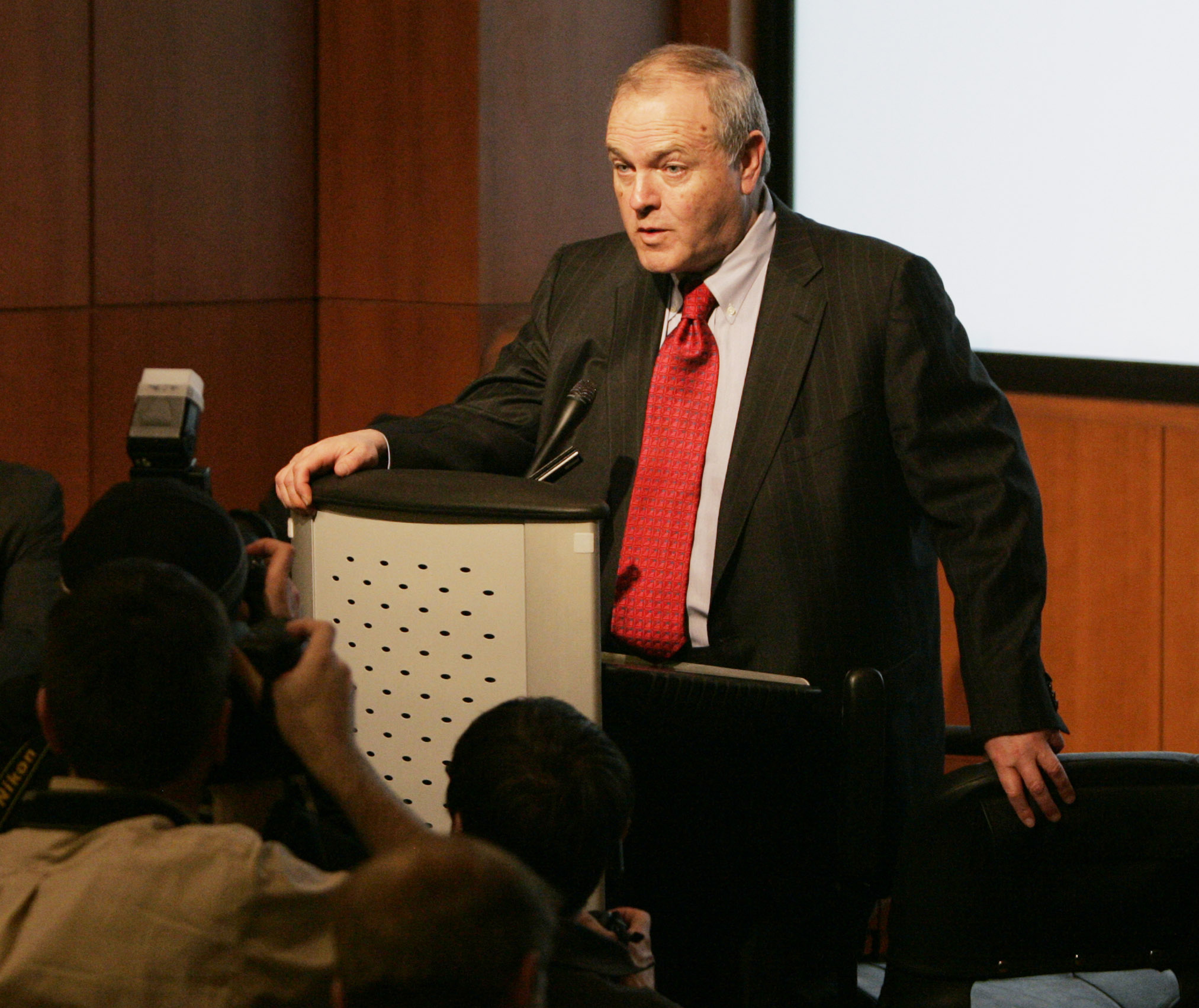
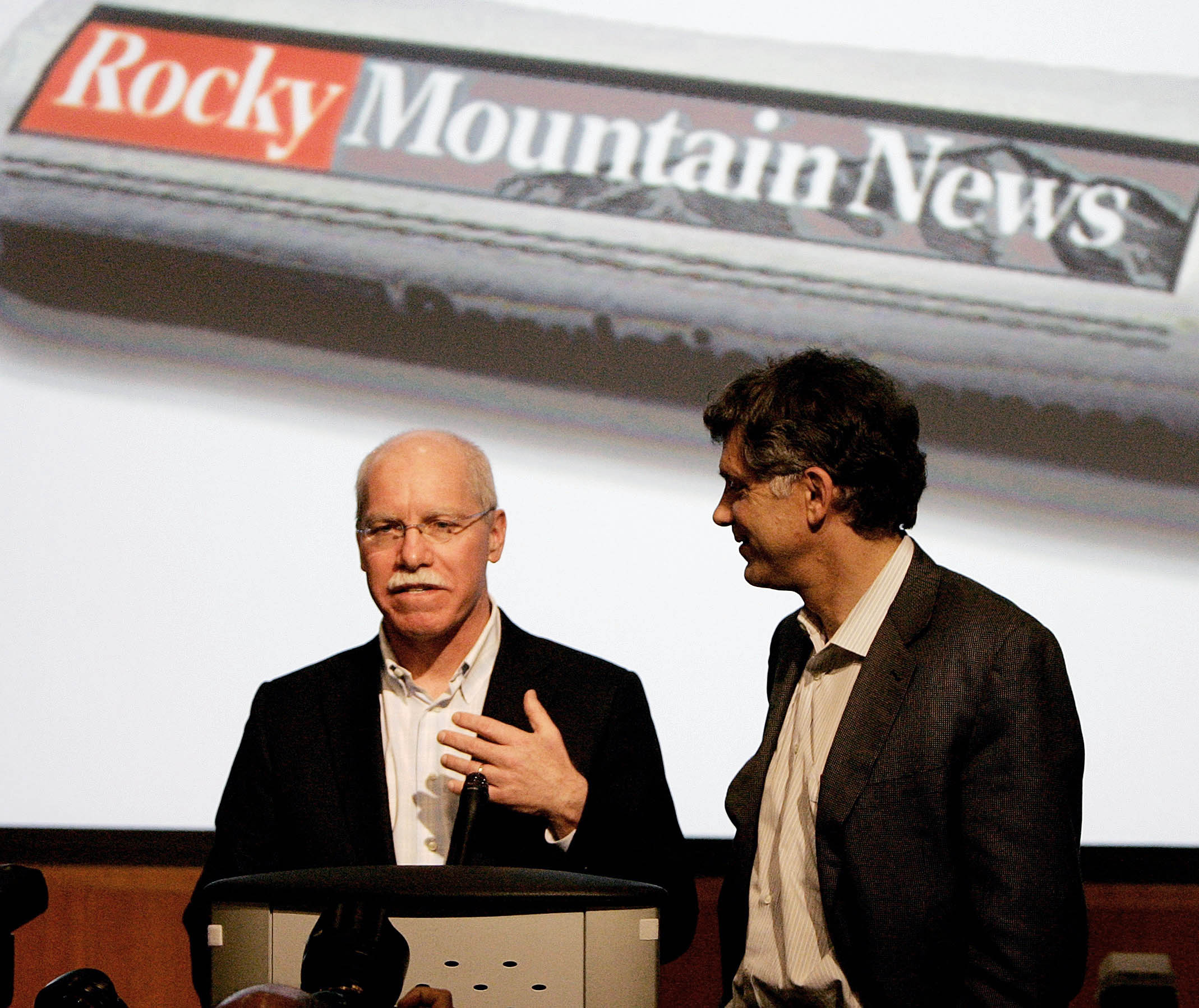
By October of 2008, the country was on the brink of a financial collapse, decimating home and car sales that were the bread and butter of print newspaper ads. By that point, classified advertising was dropping from its high in 2000, when 40 percent of all newspaper revenue came from classifieds. Poynter’s Edmonds reported that classified ad revenue fell a whopping 70 percent from 2000 to 2009, from $19.6 billion to roughly $6 billion.
As a result, the Rocky’s future was in particular jeopardy. Its tabloid design might have been a favorite of the readers, but it was not of advertisers. Because a tabloid page is smaller, full-page ads in the Rocky were sold for 20 to 30 percent less than full-page ads in the Post’s broadsheet. That made the Post the more valuable asset in the JOA. The Rocky needed to figure out something — and quick — to satisfy an increasingly uneasy Scripps company.
“There was discussion,” Boehne said, “that we put the papers together and that was, shall we say, not encouraged by the Justice Department,” which was still arguing for two distinctive editorial voices.
Scripps was left with two options: sell the Rocky or close it down.
At the time, Laura Frank was an investigative reporter at the Rocky and married to a Rocky sportswriter. They had two children, ages 8 and 5. She said she remembers Boehne announcing to the newsroom in early December that the paper was for sale. She knew that was a longshot. Who was going to buy a failing paper in that financial climate?
“It was horrific,’’ Frank said. “How do you pay the mortgage? How do you put food on the table? No one knew what the economy was going to do. I remember that it was like living moment to moment. I didn’t know if I was going to continue to do what I love. I’m a journalist. It felt more like a passion to me, a calling. So there was that, but then you had these other questions. How will I make ends meet? How do I take care of my kids? What is going to happen?”
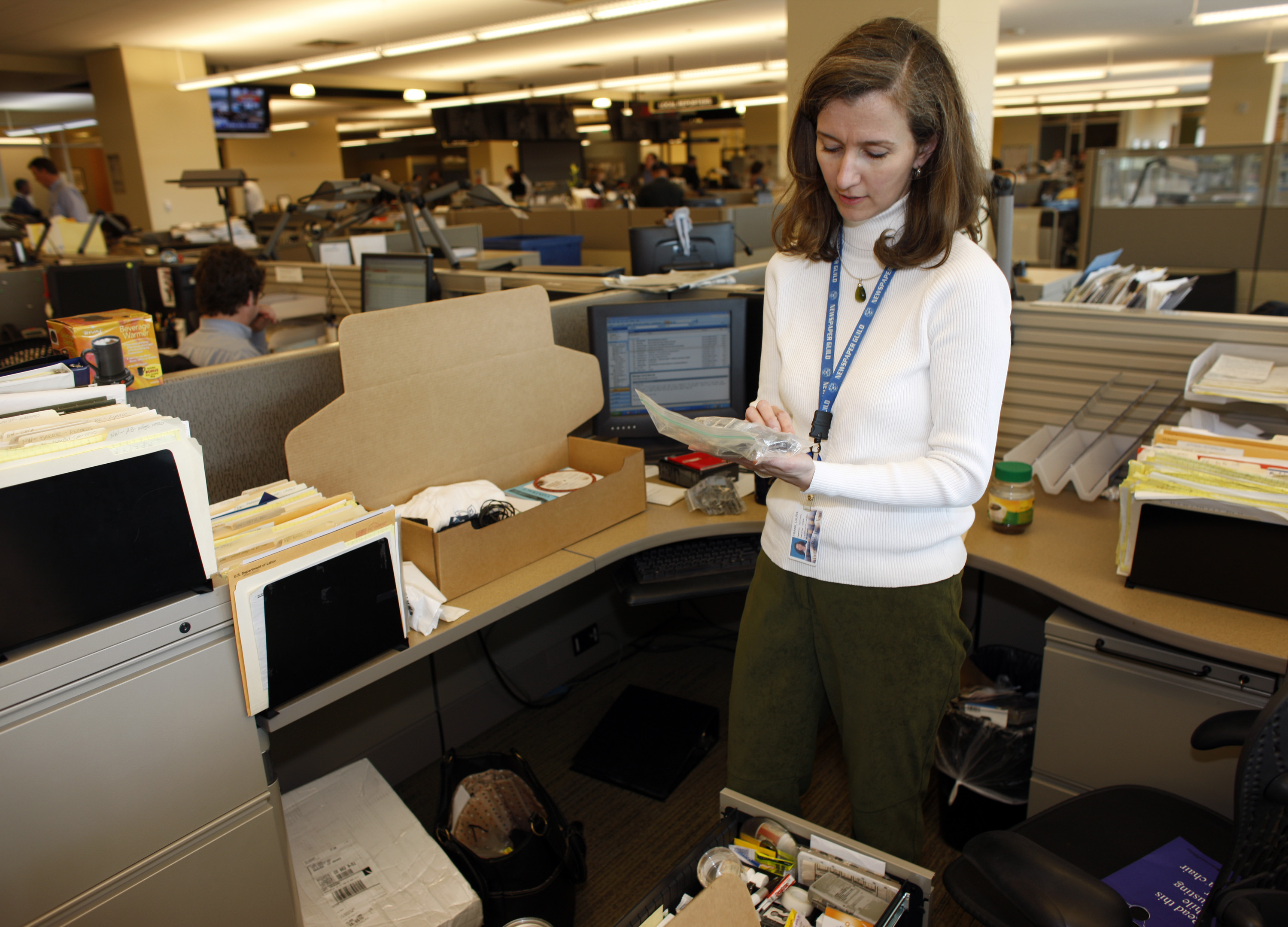
The Rocky was barely hanging on as 2008 turned into 2009 and even the Post knew it.
“We knew what was going to happen,” said Chuck Murphy, who worked as an editor at the Post at that time. “So we had a list of Rocky staffers who we thought we wanted to bring over. We were interviewing Rocky staffers while the Rocky was still open. They would come up in a secret conference room and we’d do interviews with them.”
By February, after claiming the Rocky lost $15 million the previous year, Scripps was out of time, money and patience. On Feb. 26, 2009 — mere days after Scripps concluded that there were no other solutions — staffers of the Rocky were called to the middle of the newsroom. Boehne made the announcement:
“Good morning. We won’t take long. We want to answer your questions. Tomorrow will be the final edition of the Rocky Mountain News.”
The announcement was expected, yet still stunning.
“I felt it was kind of like the feeling when you’ve got an elderly loved one in your family that finally ups and dies,’’ said Hank Schultz, who was at the Rocky for 23 years as an editor and designer. “You’re sort of expecting them to die at some point. And then when they actually do die, you’re like, ‘Holy s***, they died.’”
While Boehne was making the announcement, staffers of The Denver Post, on another floor in the same building, were watching a live feed on the Rocky’s website.
“It was kind of quiet on our floor for a little bit,’’ Moore said.
About 200 journalists were suddenly out of jobs, with only a severance package going through the end of April of that year.
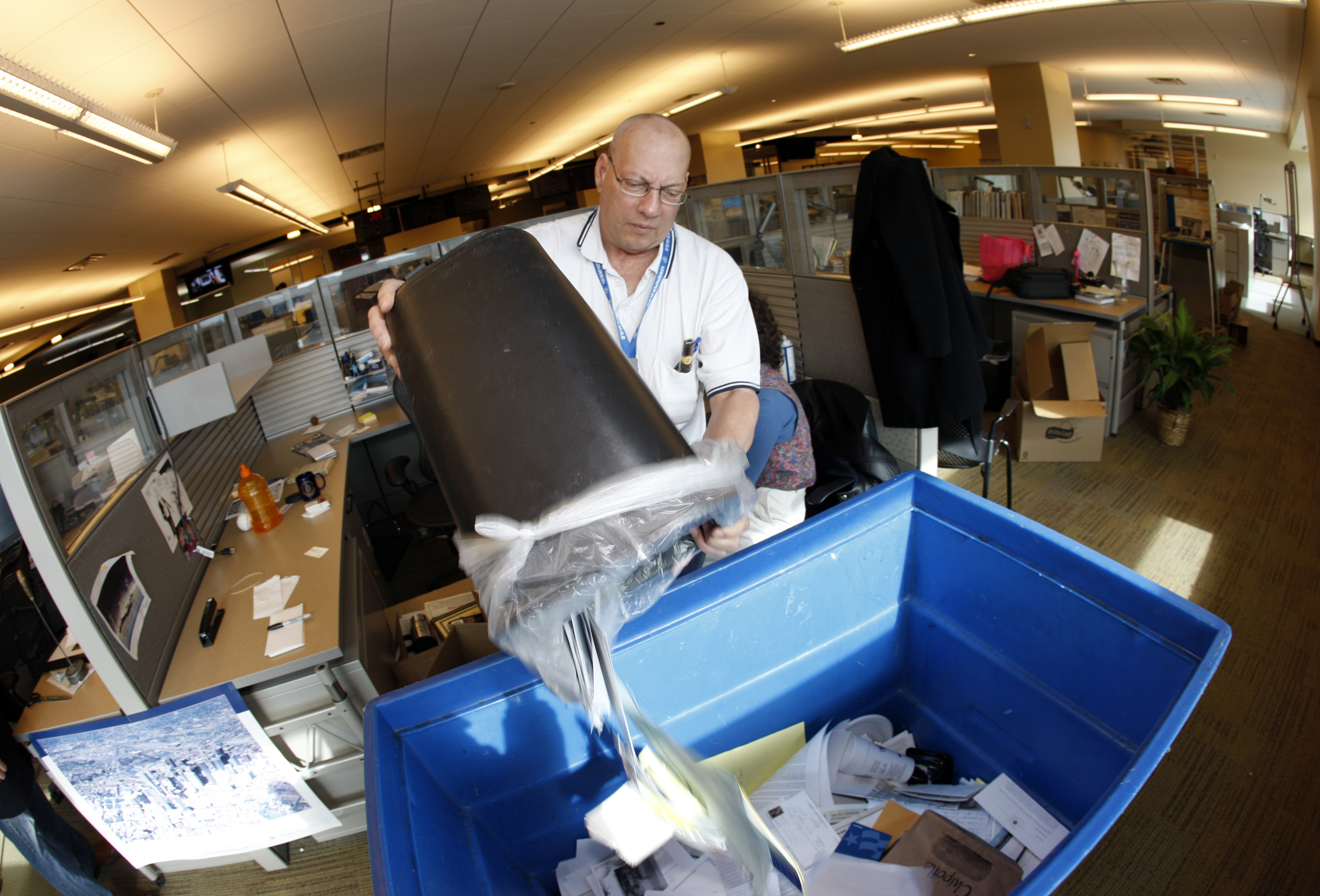

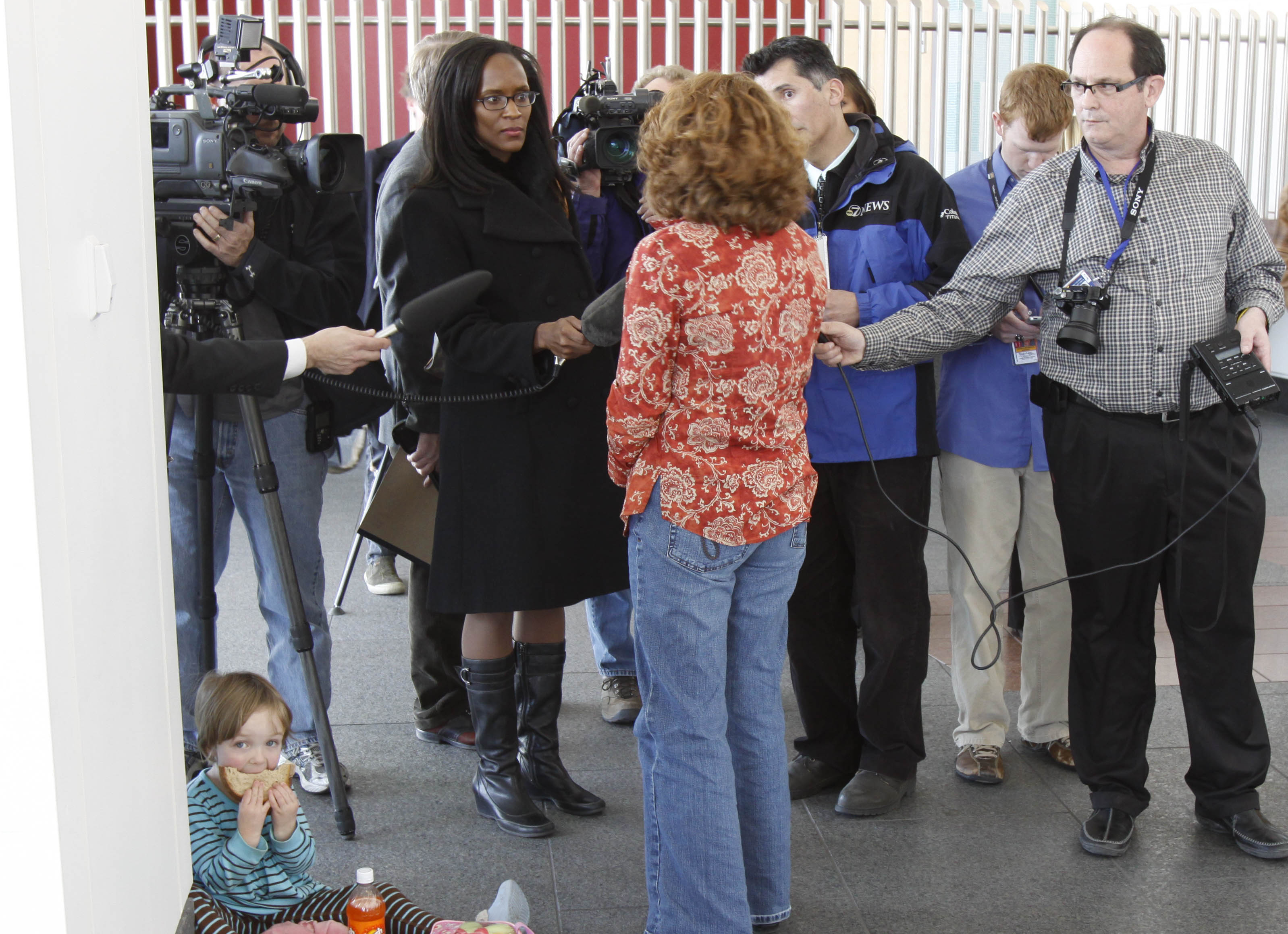

“It was traumatic,” said Frank, now the vice president of journalism at Rocky Mountain PBS. “The memories of that day are burned in my mind. I remember that last day, coming in and they said, ‘This is the final edition.’ I finished with what I was doing and I just sat at my desk, not wanting to leave, not wanting to leave the magic that was about to be over.”
For Temple, the magic was not over. The Rocky had one more day left. For months, he had been preparing for the 150th anniversary edition. All that preparation would now go into the final edition.
“We owed to the people who had given so much to this paper over the more than a century to produce something that we would be really proud of,” Temple said, “and that they would be really proud of and it would reflect really well on them and would reflect our relationship with the community.”
After 149 years and 311 days, the final edition of the Rocky Mountain News was Feb. 27, 2009. The headline: “Goodbye, Colorado.”
“It was just horrible,” Boehne said. “And I always feel guilty talking about how it was horrible because whatever it was for me, it was about a hundred-fold for anybody in the room.”

Unstoppable decline
The news immediately appeared good for The Denver Post. It retained 86 percent of the Rocky’s subscriptions. Daily circulation of the Post jumped from just over 210,000 to nearly 341,000.
“We talked about how things are going to change for us,’’ Moore said. “We had to shoulder the burden of two newspapers now. This is not a time to exhale. This is a time to step up and perform better than we performed. That was our attitude.”
At that point, The Post’s newsroom had 250 journalists.
“We wanted to do everything better,” Moore said.
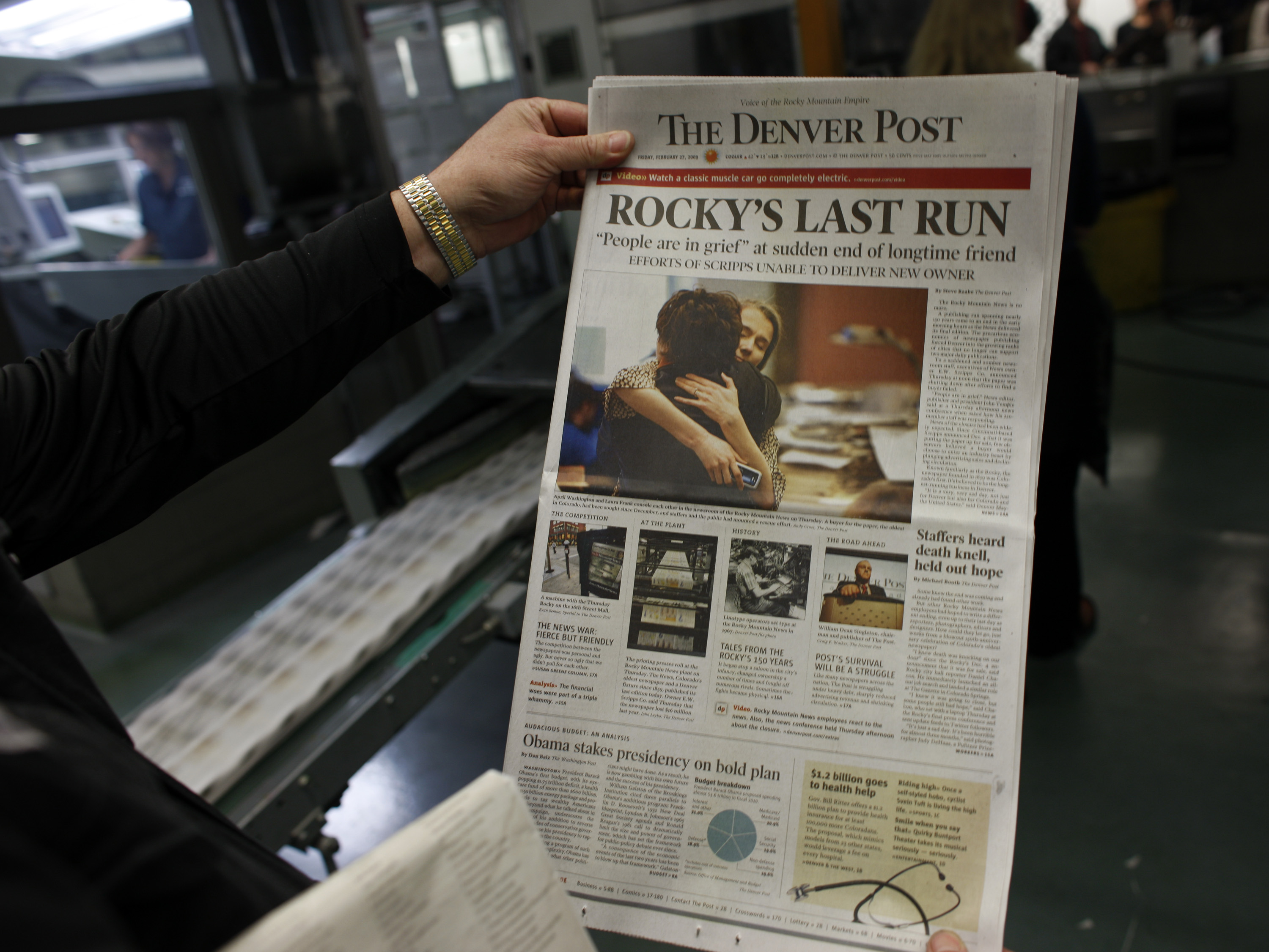
Financially, however, Singleton’s MediaNews had problems. It had borrowed heavily before the recession to buy other properties and by 2010, just a year after the Rocky closed, it filed for Chapter 11 bankruptcy. In 2013, MediaNews merged with Digital First Media, which took over the Post while Singleton remained publisher.
Frustrated by cuts to the Post by Digital First, Singleton left the company in May of 2018. He told Westword, an independent news outlet in Colorado: “They’ve killed a great newspaper.”
The New York Times reported last April that The Post had a weekday circulation of about 170,000 and about 8.6 million unique monthly visitors to its website. At that time, the Post wrote a scathing editorial, criticizing its owners and saying, “Denver deserves a newspaper owner who supports its newsroom.”
Denver has gone from a two-newspaper town with more than 500 journalists and a combined daily circulation of 846,458 to a single newspaper with 170,000 daily circulation and fewer than 80 journalists.
Yet, from a business standpoint, Digital First isn’t failing. During the 2017 fiscal year, Digital First reported profits of almost $160 million. The company did not respond to a request for comment.
Temple, now the director of the investigative reporting program at the University of California-Berkeley Graduate School of Journalism, criticized Digital First: “They appear to be maximizing profits and effectively mining whatever is left of the newspaper until it dies and then the carcass will be left by the side of the road. That appears to be their business strategy.’’
Moore is no longer the Post’s editor. Also disheartened by continuous cuts, he resigned in 2016. He said he still respects those who work there.
“I still love the Post,” Moore said. “That’s never going to change for me. I’m sad to see the condition that it’s in. I’m sad to see it starved of resources and space. I’m sad to see that they have owners who don’t live here in our community. The commitment is not there and it’s so evident. It’s painful to watch and it’s painful to hear people in this town talk about the Post like it’s dying or dead or doesn’t matter anymore. That’s sad.”
Journalism isn’t dead in Colorado. The Post, despite all the cuts, continues to produce meaningful and award-winning pieces. The Colorado Sun — a blockchain-funded, ad-free, online news outlet featuring former Post staffers — was launched in September of 2018. Westword covers news and the local entertainment scene. Colorado television stations are respected for quality journalism.
But long gone are the days of the great newspaper war between the Rocky and the Post. Former staffers of the Rocky still get emotional talking about their time there. There’s a reunion of former staffers in March.
Courtesy: Denver Public Library
Courtesy: Denver Public Library
Meantime, Boehne, now Scripps’ chairman, remains pensive when asked about it 10 years later.
“Among the hardest decisions a company has ever made,” Boehne said. “I’ve been in the boardroom since 1999 and I can’t think of many decisions that were more difficult than that one. Looking back, obviously, I’d probably say that I still think it was the right decision.”
He knows, however, that that doesn’t make it any easier for those who lost their jobs and, in some cases, their journalism careers the day he stood in the newsroom and announced the Rocky was closing. He said he tries to think what could have been done differently. Maybe the JOA was the problem. Maybe the financial crisis made it all unavoidable.
Or maybe it was something else.
Boehne said he thinks about how newspapers were unprepared for the transformation of the industry via the digital age. It makes him think of the movie “Butch Cassidy and the Sundance Kid.’’ Throughout, Butch and Sundance are being followed. They keep asking, “Who are these guys?”
“I really think that’s what the industry was,” Boehne said. “We looked over our shoulders and said, ‘Who are these guys with this Internet?’ We just ignored it until they were on top of us.”
The Rocky is now gone. The Post is a fraction of what it used to be.
“What it tells you is,” Temple said, “if that’s the future for the United States then local communities are going to be really underserved and that has a real impact on our democracy.”
More from Poynter: The news industry doesn’t look like it did a decade ago. Poynter interviewed 15 journalists from across the United States to hear their experiences during the last 10 years. Did we just experience the hardest decade in journalism?
See the documentary: Rocky Mountain News staffers reflect on the final days of their newspaper in a short documentary by filmmaker Matthew Roberts. Watch “Final Edition — The End of a Newspaper.”
Subscribe for more: Stay up to date on the latest media news and get more from Tom Jones by subscribing to Poynter’s daily Morning Mediawire. Or follow the latest in local news with Kristen Hare’s Local Edition.
Written by Tom Jones
Designed by Ren LaForme
Edited by Barbara Allen
